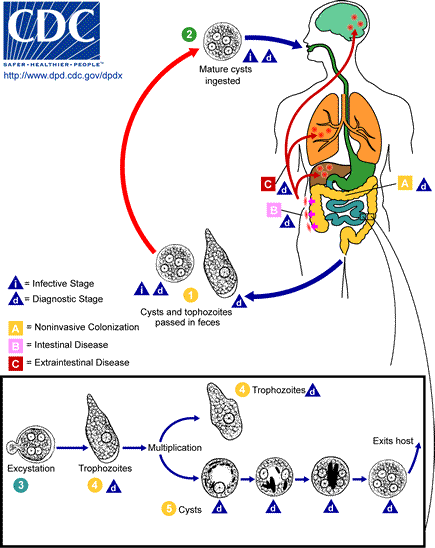Soubor:Entamoeba histolytica Amebiasis LifeCycle.gif
Z WikiSkript
Entamoeba_histolytica_Amebiasis_LifeCycle.gif ((435 × 548 pixelů, velikost souboru: 28 KB, MIME typ: image/gif), 0,2 s)
Historie souboru
Kliknutím na datum a čas zobrazíte příslušnou verzi souboru.
| Datum a čas | Náhled | Rozměry | Uživatel | Shrnutí | |
|---|---|---|---|---|---|
| aktuální | 29. 4. 2006, 16:26 |  | 435 × 548 (28 KB) | wikimediacommons>Patho | {{Information| |Description= Amebiasis [Entamoeba histolytica] Life Cycle of Entamoeba histolytica Cysts and trophozoites are passed in feces . Cysts are typically found in formed stool, whereas trophozoites are typically found in diarrheal stool. |
Využití souboru
Tento soubor používá následující stránka:

